20kWh Battery Storage: Is It Right for You?
Power up your life with 20 kWh battery storage! Say goodbye to blackouts and hello to uninterrupted joy. Let’s find out if it’s the perfect fit for you.
Power up your life with 20 kWh battery storage! Say goodbye to blackouts and hello to uninterrupted joy. Let’s find out if it’s the perfect fit for you.
Buy Wholesale OEM Power Storage Wall from China: Discover the innovative technology of power storage walls, storing excess solar or wind energy for later use. Explore their benefits, working principle, and factors to consider when choosing one. Top manufacturers in China include BYD and Sungrow, offering high-quality and reliable solutions for sustainable living and reduced electricity costs.
A power storage wall is a system that stores excess energy generated from renewable sources like solar panels. It consists of a battery bank, an inverter, and other components. By storing energy, power storage walls provide reliable electricity during times when solar panels may not generate enough power or during grid outages. They offer benefits such as reduced reliance on the grid, increased energy independence, and lower electricity bills. Power storage walls are an innovative solution for homeowners seeking to store renewable energy and enhance their energy resilience.

China is known to be one of the largest manufacturers of renewable energy technologies in the world, including power storage walls. There are various Chinese manufacturers that produce high-quality and affordable power storage walls for both residential and commercial use.
One such manufacturer is BYD, which has been in the energy industry for over a decade. They offer a range of lithium-ion batteries with different capacities to meet various needs. Their products have gained recognition globally due to their reliability, safety features, and long lifespan.
Another notable manufacturer is Redway Power, which specializes in solar inverters and battery systems. Their power storage solutions are designed to provide reliable backup during power outages while also optimizing self-consumption of solar energy generated by rooftops or other sources.
There’s CATL Energy Storage Solutions which offers a wide range of battery modules with different sizes and capacities depending on specific requirements. They focus on providing cost-effective solutions while maintaining high quality standards.
China boasts many reputable power storage wall manufacturers that cater to diverse customer needs through innovative design, affordability, and durability.
To sum up, power storage walls are a game-changer for renewable energy consumption. They allow households and businesses to store excess solar energy during the day for use at night or on cloudy days. With the increasing demand for clean energy around the world, power storage walls have become an important component of sustainable living.
When choosing a power storage wall in China, it is essential to consider factors such as capacity, efficiency, brand reputation, and after-sales service. Some of the top manufacturers in China include BYD Company Limited and SunGrow Power Supply Co., Ltd.
By investing in a reliable power storage wall from a reputable manufacturer like those mentioned above, you will enjoy many benefits such as reduced electricity bills and increased independence from traditional grid systems. Not only that but by reducing your carbon footprint through renewable energy usage, you’ll be contributing positively towards environmental conservation efforts.
If you’re looking to join this revolutionary movement towards sustainable living while saving money on electricity costs in the long run – then installing a power storage wall might just be what you need!
FAQs of Custom Lithium Battery Module OEM: Learn about the advantages, selection tips, care instructions, HS codes, and the necessity of Battery Management Systems (BMS) for lithium battery modules. Ensure optimal performance and longevity with expert insights on choosing, caring for, and importing lithium battery modules.
Introducing the lithium battery module: a compact, self-contained unit with connected lithium-ion cells offering higher output voltage and capacity. Here’s why they stand out:
In summary, lithium battery modules provide a reliable power source with advantages surpassing traditional batteries.
Discover the advantages of lithium battery modules, a popular choice for various applications:
In summary, the high energy density, durability, fast charging, and eco-friendliness make lithium battery modules an excellent choice for modern applications.
Choosing the right lithium battery module involves considering key factors:
By weighing these considerations, you can confidently choose the ideal lithium battery module for your unique requirements.
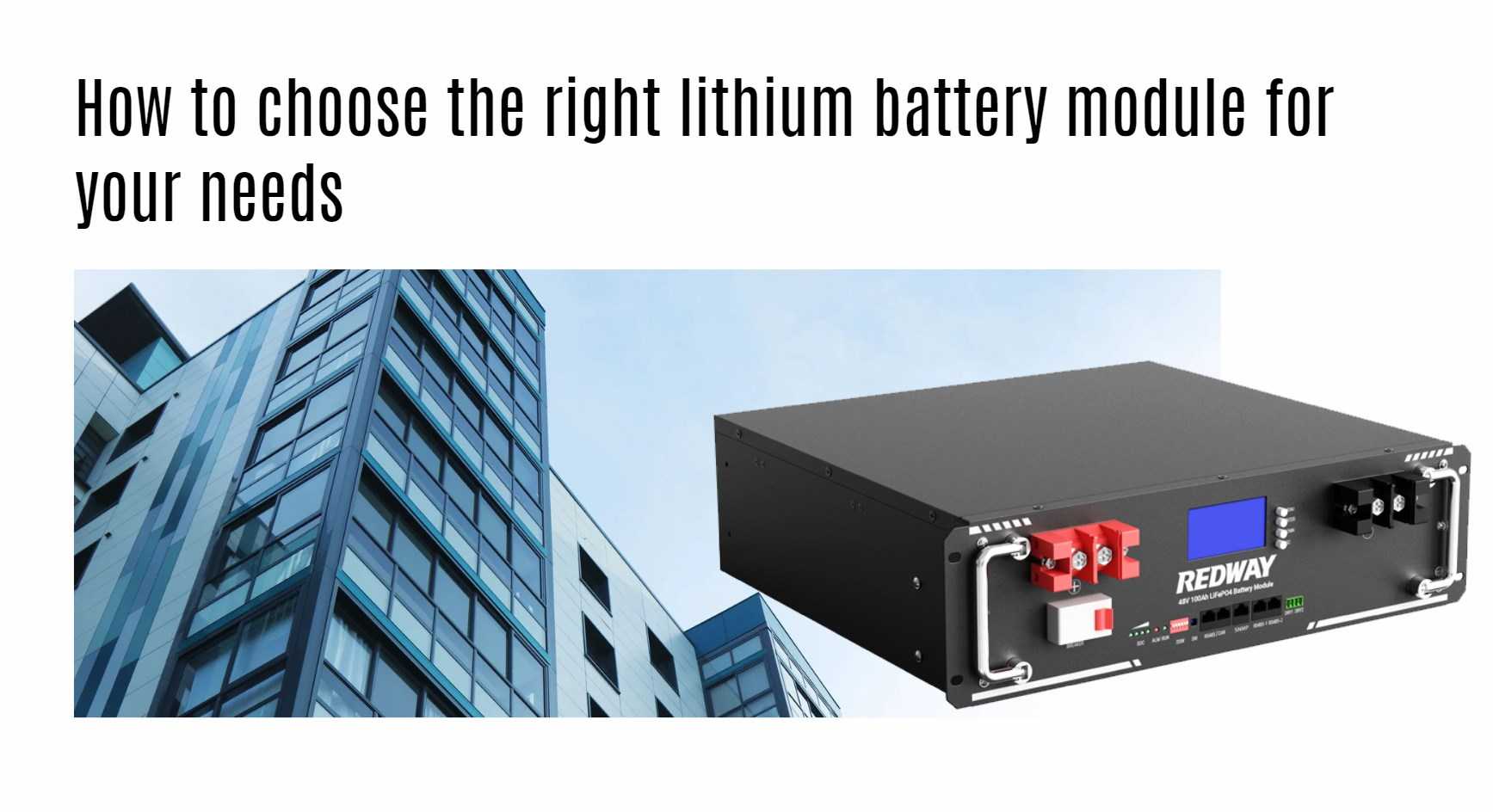
Understanding OEM (Original Equipment Manufacturer) in the context of batteries is crucial:
By understanding these points, you can make an informed decision about the right battery module for your device.
When dealing with the import or export of lithium-ion battery modules, understanding the HS code is essential:
Understanding and correctly applying the HS code is crucial for a seamless and compliant international trade process.
Ensuring the longevity and optimal performance of your lithium battery module involves simple care practices:
Following these straightforward tips ensures the extended life and continued excellent performance of your lithium battery module.
Unlock the full potential of lithium battery modules with these key insights:
By incorporating these insights, you can harness the efficiency and reliability of lithium battery modules across various applications.
The current state of the lithium market reveals a complex interplay between supply and demand, with reports indicating a potential oversupply due to increased production capacity and fluctuating demand from electric vehicle manufacturers. Understanding these dynamics is crucial for anticipating future trends in lithium availability.
The lithium market is currently experiencing significant fluctuations, with supply outpacing demand due to increased production capabilities from major mining countries like Australia and Chile. As of late 2024, prices have dropped as producers respond to a slowdown in electric vehicle sales, leading to concerns about oversupply.Chart: Current Market Overview
| Metric | Value |
|---|---|
| Current Price | Approximately $10,000 per metric ton |
| Production Increase | 25% increase expected this year |
| Demand Forecast | Expected to reach 3 million tons by 2030 |
Several factors influence lithium supply and demand:
Chart: Factors Influencing Supply and Demand
| Factor | Description |
|---|---|
| EV Growth | Significant driver of lithium demand |
| New Mining Projects | Increases overall supply |
| Market Speculation | Affects pricing based on future expectations |
Lithium is a critical component in electric vehicle batteries, particularly lithium-ion batteries:
Chart: Role of Lithium in EV Batteries
| Feature | Description |
|---|---|
| Energy Storage | Essential for powering electric vehicles |
| Charging Efficiency | Allows for faster charging times |
| Weight | Reduces overall vehicle weight |
The implications of an oversupply include:
Chart: Implications of Oversupply
| Implication | Description |
|---|---|
| Price Declines | Lower revenue for producers |
| Investment Shifts | Reduced funding for new projects |
| Market Correction | Possible rebound if demand increases |
Geopolitical factors play a significant role:
Chart: Geopolitical Influences on Supply
| Factor | Description |
|---|---|
| Resource Control | Dominance by specific countries |
| Trade Policies | Impact on international trade |
| Local Regulations | Affect mining operations |
Recent innovations include:
Chart: Innovations Overview
| Innovation | Description |
|---|---|
| Direct Extraction | More efficient extraction methods |
| Sustainable Practices | Reduces environmental impact |
Environmental regulations can significantly impact lithium production:
Chart: Regulatory Impact Overview
| Regulation Type | Effect on Production |
|---|---|
| Stricter Regulations | Slower mining operations |
| Compliance Costs | Increased operational expenses |
Future projections indicate that while there may be short-term oversupply, long-term demand is expected to rise sharply due to increased adoption of electric vehicles and renewable energy systems:
Chart: Future Projections Overview
| Year | Projected Demand (tons) |
|---|---|
| 2025 | ~2 million |
| 2030 | >3 million |
Battery recycling programs are becoming increasingly important as they help recover valuable materials from used batteries:
Chart: Recycling Impact Overview
| Benefit | Description |
|---|---|
| Material Recovery | Reduces need for new raw materials |
| Sustainability | Minimizes environmental impact |
Emerging markets are playing a crucial role in expanding lithium supply chains:
Chart: Emerging Markets Overview
| Region | Potential Contribution |
|---|---|
| Argentina | Rich lithium brine resources |
| Africa | Untapped mineral deposits |
Technological advancements are essential for improving extraction efficiency:
Chart: Technological Innovations Overview
| Innovation | Description |
|---|---|
| Enhanced Techniques | Higher recovery rates |
| Processing Innovations | Reduced costs and environmental impacts |
Expert Views”The future of lithium supply hinges not only on addressing current oversupply but also on ensuring sustainable practices that meet the escalating global demand,” states Dr. Sarah Mitchell, an expert in renewable energy resources.
Looking for a reliable supplier of lithium iron phosphate (LiFePO4) batteries? Look no further than Lithpower! With their high-quality products and exceptional customer service, Lithpower has become a trusted name in the industry. But is this factory supplier really as dependable as they claim to be? In this blog post, we’ll take a closer look at what makes Lithpower stand out from the competition and determine whether or not they’re the right choice for your energy storage needs. So if you’re considering purchasing LiFePO4 batteries, keep reading to learn more about Lithpower’s product offerings and reputation in the market!
Lithpower is a lithium iron phosphate battery manufacturer that specializes in producing high-quality LiFePO4 batteries. The company offers a wide range of products, including rechargeable batteries for electric vehicles and energy storage systems. They also offer custom-made solutions to meet specific customer needs.
One of the key features that sets Lithpower apart from other manufacturers is their focus on safety. Their advanced materials and manufacturing processes ensure that their batteries are safe to use and handle, with minimal risk of overheating or explosion.
In addition to safety, Lithpower’s products are known for their exceptional performance and long lifespan. Their LiFePO4 batteries have a higher energy density than traditional lead-acid batteries, meaning they can store more energy in less space.
Lithpower stands out as a reliable supplier of high-quality LiFePO4 batteries. With their commitment to safety and superior performance, they’re an excellent choice for customers looking for dependable energy storage solutions.
Lithpower is a reputable factory supplier of high-quality lithium iron phosphate batteries. They offer a wide range of products that cater to various industries, including automotive, marine, solar power systems, and more.
Their product line includes lifepo4 batteries in different sizes and capacities suitable for both small-scale and large-scale applications. With advanced manufacturing technologies at their disposal, Lithpower can also customize battery designs based on the specific needs of clients.
Aside from conventional lithium iron phosphate batteries, Lithpower also offers prismatic cells with higher energy density levels ideal for electric vehicles (EVs). They have cylindrical battery packs designed for golf carts and other industrial utility vehicles as well.
Additionally, they provide complete solutions such as battery management systems (BMS), chargers, inverters and converters to ensure seamless integration into any system.
Lithpower’s product portfolio caters to an extensive range of applications requiring efficient energy storage solutions.
Lithpower is a well-known supplier of lithium iron phosphate (LiFePO4) batteries that are widely used in various applications. But the question remains, is Lithpower a reliable supplier? Let’s take a closer look.
Firstly, Lithpower has been in the business for over ten years and has established itself as a reputable manufacturer of high-quality LiFePO4 batteries. The company has also invested heavily in research and development to ensure its products remain competitive and up-to-date with the latest advancements in battery technology.
Secondly, Lithpower adheres to strict quality control measures throughout its manufacturing process. Every battery undergoes rigorous testing before leaving the factory to ensure it meets or exceeds industry standards. This commitment to quality ensures customers receive reliable and long-lasting batteries.
Thirdly, Lithpower offers excellent customer service support through their knowledgeable staff who can assist you with any queries regarding your purchase or product application needs.
Based on these factors mentioned above, it’s safe to say that Lithpower is indeed a reliable supplier of LiFePO4 batteries.
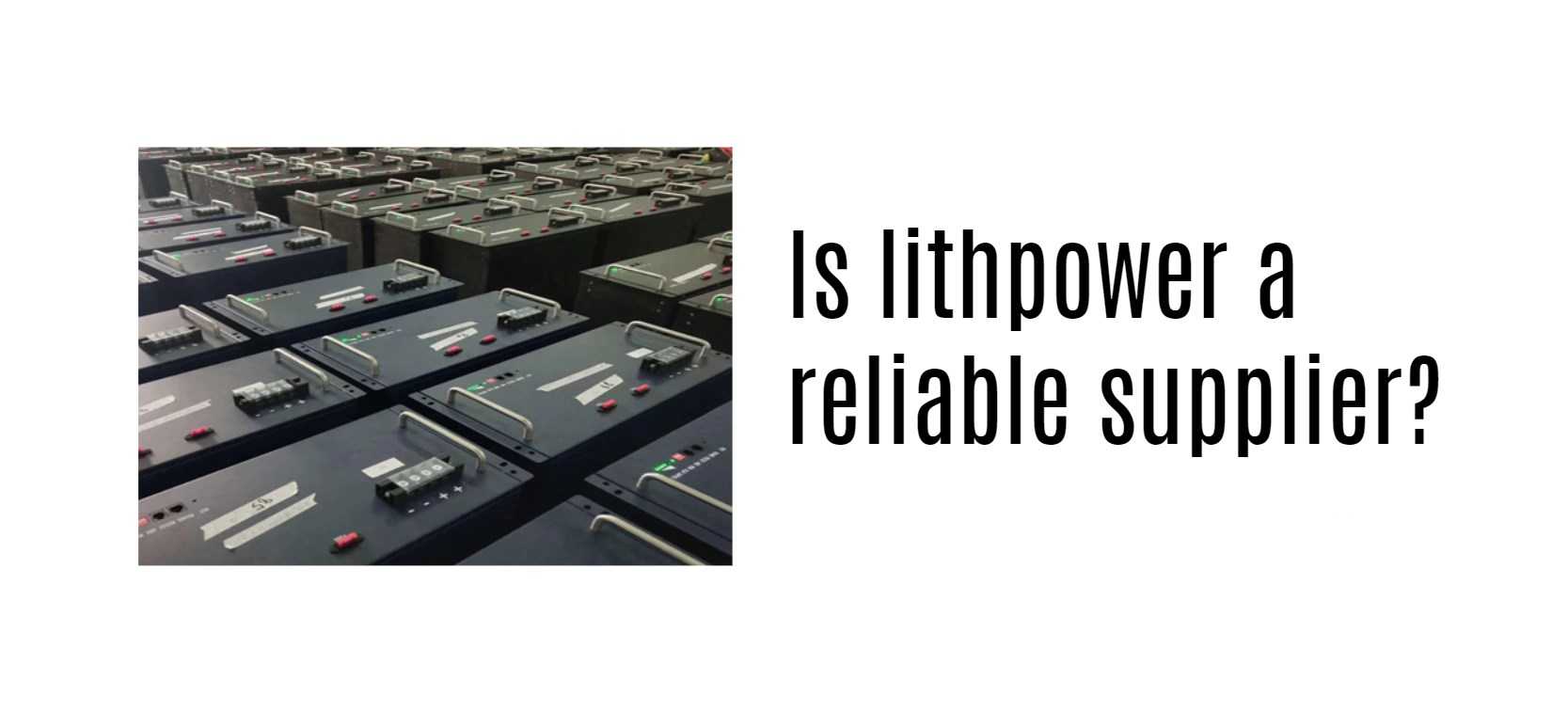
If you are interested in purchasing high-quality lithium iron phosphate batteries from Lithpower, there are a few steps you can follow to ensure a successful transaction.
Firstly, visit the Lithpower website and browse through their product offerings to find the battery that best suits your needs. Each product page contains detailed specifications as well as photos of the product.
Once you have selected the battery you want to purchase, add it to your cart and proceed to checkout. You will need to provide some basic information such as your name, shipping address, and payment details.
Lithpower offers several payment options including PayPal and credit card payments through Stripe. They also offer free shipping for orders over a certain amount depending on your location.
After completing your order, Lithpower will send you an email confirmation with tracking information so that you can monitor the progress of your shipment. The company has a good track record of delivering products on time and in excellent condition.
Purchasing Lithpower products is a straightforward process that is made easy by their user-friendly website and efficient customer service team.
To sum it up, Lithpower is a reliable factory supplier of high-quality Lifepo4 batteries. With their commitment to customer satisfaction and innovation in battery technology, they have established a strong reputation as a trusted brand in the industry.
Their extensive range of products, including customized solutions for specific requirements, makes them an excellent choice for businesses and individuals looking for reliable energy storage solutions.
When purchasing from Lithpower, customers can rest assured that they are getting quality products at competitive prices with exceptional customer service. Their dedication to sustainability and environmental responsibility also sets them apart from many other suppliers.
If you are searching for an efficient and dependable manufacturer of Lifepo4 batteries with quality assurance at every step – then look no further than Lithpower!
An ampere hour (Ah), often referred to as an amp hour, is a unit of electric charge that represents the amount of current (in amperes) flowing for one hour. For example, a battery rated at 10 Ah can deliver 10 amps for one hour or 1 amp for 10 hours, indicating its capacity to store and provide energy.
The concept of ampere hours is crucial for understanding battery capacity and performance, especially in applications such as electric vehicles, renewable energy systems, and portable electronics. Here’s a deeper dive into the significance of ampere hours.
An ampere hour quantifies how much electric charge a battery can deliver over time. The formula to calculate amp hours is: Amp Hours (Ah) = Current (A) × Time (h). For instance, if a battery supplies 5 amps for 2 hours, it has delivered: 5 A × 2 h = 10 Ah. This measurement helps users gauge how long a battery can power a device before needing a recharge.
When selecting batteries for various applications, understanding the amp hour rating is essential. Here’s why:
Capacity Comparison
Different batteries have varying amp hour ratings, which directly affect their usability. For example:
Application Suitability
Higher amp hour ratings are ideal for applications with high power demands, such as electric vehicles or solar energy storage systems, where longer runtimes are crucial.
Ampere hours are widely used in various fields:
Electric Vehicles
In electric vehicles, the amp hour rating determines how far the vehicle can travel on a single charge. A higher Ah rating means more energy storage and longer driving range.
Renewable Energy Systems
In solar power systems, batteries are rated in amp hours to indicate how much energy can be stored from solar panels and used during non-sunny periods.
Consumer Electronics
Portable devices like laptops and smartphones also use amp hour ratings to inform users about battery life expectations.
As experts in Lithium LiFePO4 batteries at Redway Battery, we understand the critical role that ampere hours play in determining battery performance and suitability for various applications. Our focus on high-quality lithium solutions ensures that our customers benefit from superior capacity and longevity. By selecting our batteries, users can expect reliable performance tailored to their specific energy needs.”
Understanding ampere hours is essential for anyone involved in selecting or using batteries. This unit of measurement provides valuable insights into battery capacity and performance across various applications, from electric vehicles to renewable energy systems. By considering the amp hour rating when choosing a battery, consumers can ensure they select the right power source for their needs.

Looking for the perfect battery to power your vehicle or boat can be overwhelming, especially when faced with a plethora of options on the market. Two popular choices are Optima 31 and Optima 34 batteries. But what sets these two apart? Which one is better suited for your needs? In this blog post, we will explore the differences between these two batteries and help you make an informed decision. So sit back, relax, and let’s dive in!
The Optima 31 is a deep cycle battery that is known for its exceptional durability and long-lasting performance. It is specifically designed to withstand harsh weather conditions, making it ideal for use in marine vehicles and other heavy-duty applications.
One of the standout features of the Optima 31 is its SpiralCell design, which improves both power and capacity. This technology also makes the battery more resistant to vibration damage, ensuring longevity even in tough environments.
In addition to its rugged construction, this battery boasts an impressive reserve capacity of up to 155 minutes. This means that even if your vehicle’s alternator fails, you’ll still have plenty of power to keep your lights on and electronics running until help arrives.
If you’re looking for a reliable deep cycle battery with excellent endurance capabilities, then the Optima 31 may be just what you need. Its combination of advanced technologies and robust build quality make it a top choice among avid boaters and off-road enthusiasts alike.
The Optima 34 is a battery model designed and manufactured by the renowned battery manufacturer, Johnson Controls. It’s a high-performance AGM (Absorbent Glass Mat) battery that is specially constructed to provide reliable starting power for your vehicle in all weather conditions.
One of the most significant advantages of the Optima 34 over traditional batteries is its durability. Its unique design makes it highly resistant to vibrations, which can often cause damage to other types of batteries.
Another feature that sets this battery apart from others is its ability to maintain a stable voltage output throughout its lifespan. This ensures that your vehicle will always have sufficient power for all electrical components.
The Optima 34 has also been engineered with advanced safety features such as spark-proof technology and reverse polarity protection, making it one of the safest car batteries on the market today.
If you’re looking for a reliable and durable car battery with excellent performance capabilities, then the Optima 34 should definitely be at or near the top of your list when considering your options!
When it comes to deciding between the Optima 31 and Optima 34, there are a few factors you’ll need to consider. First and foremost is the type of vehicle you drive. The Optima 31 is better suited for smaller vehicles such as sedans or hatchbacks, while the Optima 34 is designed for larger vehicles like SUVs or trucks.
Another important consideration is your driving habits. If you frequently take short trips around town, then the Optima 31 may be more suitable for your needs. On the other hand, if you do a lot of long-distance driving on highways or off-road terrain, then the Optima 34 would likely provide better performance and reliability.
It’s also worth noting that both batteries have similar features such as high-reserve capacity and deep cycle capabilities. However, there are some differences in terms of lifespan and warranty coverage that could impact your decision.
Ultimately, choosing between these two batteries will depend on your specific requirements as a driver. It’s always best to consult with an expert who can help guide you through this process so that you can make an informed decision based on your unique needs and budget.
OPTIMA batteries are known for their high-quality and reliable performance. There are several different types of OPTIMA batteries available, each with its own unique features and benefits.
One of the most popular options is the OPTIMA Red Top battery. This battery is designed for starting applications, making it ideal for use in cars, trucks, and other vehicles. It provides a strong burst of power to get your engine started quickly and efficiently.
Another option is the OPTIMA Yellow Top battery. This type of battery is a dual-purpose design that can be used for both starting and deep cycling applications. This makes it an excellent choice for use in RVs or boats where you need reliable power over an extended period.
There’s the OPTIMA Blue Top battery which has been specifically designed to handle marine applications such as trolling motors or powering on-board electronics like GPS systems or fish finders.
Regardless of what application you have in mind there’s likely an OPTIMA Battery that will meet your specific needs thanks to their range of options available!
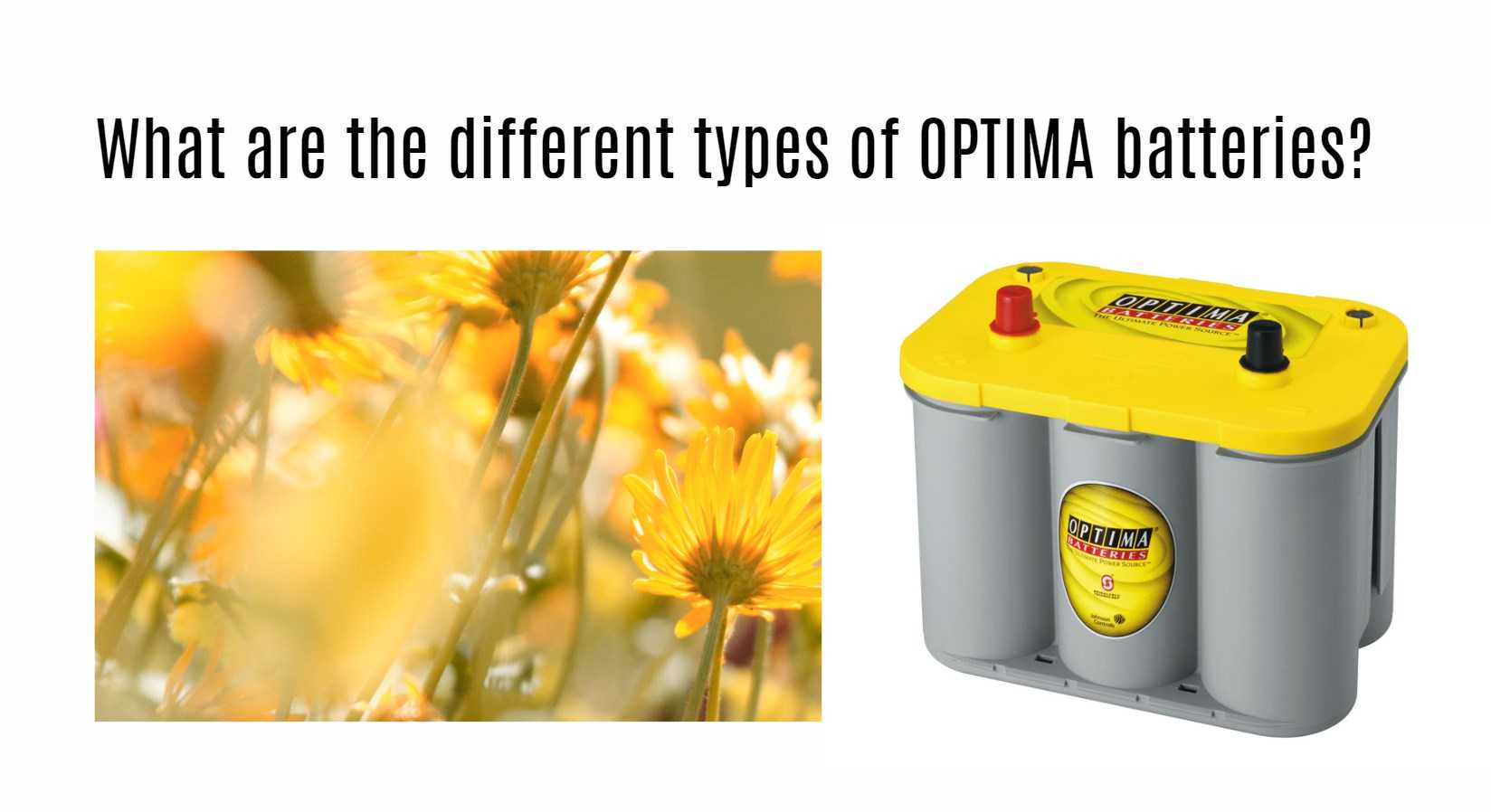
The Optima D34 battery is a high-performance AGM (Absorbent Glass Mat) battery that is used in various applications, particularly in marine and automotive industries. This battery model belongs to the Yellow Top series of Optima Batteries, which are known for their deep-cycle capabilities.
When it comes to finding an equivalent for the Optima D34, there really isn’t an exact match. However, some batteries from other brands can come close. For example, the Odyssey 31-PC2150S or the Exide Edge FP-AGML4/94R would be good options as they offer similar specifications such as amp hours and reserve capacity.
It’s essential to remember that while these batteries may have similar specs on paper, they might not perform as well as the Optima D34 due to differences in build quality and technology. When choosing a replacement battery for your vehicle or boat, always make sure it meets or exceeds the manufacturer‘s requirements.
In summary, although there isn’t an exact equivalent for the Optima D34 out there from another brand or product line – there are alternative options available with comparable characteristics.
When it comes to choosing the right battery for your vehicle, you want to ensure that you are selecting one that can provide reliable performance and longevity. Two popular options in the Optima line of batteries are the 31 and 34 models. While they may seem similar at first glance, there are some key differences to consider.
One significant difference between the Optima 31 and 34 is their size and weight. The Optima 34 is slightly larger and heavier than the 31 model, with dimensions of approximately 10 x7x7 inches compared to the smaller size of around 12x6x9 inches for the Optima 31.
Another factor to consider when comparing these two batteries is their power capacity. The Optima D31M has a CCA (Cold Cranking Amps) rating of around 900 amps while its counterpart, the D34M has a CCA rating of about approximately1000 amps.
The internal design also differs significantly between these two battery types; both have SpiralCell technology but differ in terms of how much lead plates they house inside each cell wall.
While both options offer high-quality performance features such as deep cycle capabilities and maintenance-free operation, determining which one provides better overall value will depend on individual needs like available space under hood or budget constraints etcetera.
In summary, although both batteries share many similarities regarding durability ratings & construction quality benefits -they do vary in essential metrics such as physical size/weight along with power output levels- making them suitable for different vehicles or applications depending on specific requirements & preferences!
When it comes to choosing between a red and yellow Optima battery, the decision can be tough. Both colors have their own unique set of features and benefits that may suit different individuals.
The yellow top Optima battery is specially designed for deep cycling applications such as powering stereo systems, aftermarket lights, and other electronics. This type of battery has a high reserve capacity which means it can provide power for long periods without recharging. Additionally, the yellow top has faster recharging capabilities compared to the red top.
On the other hand, the red top Optima battery is more suited for starting vehicles such as cars or trucks. It possesses a strong starting burst capability which makes it ideal in cold weather conditions. The red top also requires minimal maintenance due to its low self-discharge rate and vibration resistant design.
When deciding between a red or yellow Optima battery you must determine what your specific needs are first. If you require a powerful starter with little maintenance then go with a Red Top; if you need deep cycle performance with quick recharge times then opt-in for Yellow Top!
In summary, both the Optima 31 and 34 are excellent battery options for a range of vehicles. The main differences between them lie in their physical dimensions, reserve capacity and CCA ratings. If you prioritize power above all else, then the Optima 34 is likely to be your best bet due to its higher CCA rating. However, if you’re working with limited space or need a battery that can run accessories for longer periods of time, then the Optima 31 could be a better option.
To answer our final question on how much an Optima Group 34 weighs; it typically weighs around 43 pounds or slightly more depending on the model. It’s important to keep this weight in mind when installing your new battery so that you can ensure proper support and avoid any potential damage to your vehicle or yourself during installation.
Ultimately, the decision between these two great batteries comes down to individual needs and preferences. So take some time to consider what factors matter most to you before making a purchase – whether it’s size constraints or high performance requirements – there is always an Optima battery option available that will meet your specific needs!
Are you tired of constantly replacing your batteries? Do you want a battery that lasts longer and is more reliable? Look no further than the lifepo4 battery! This powerful lithium-ion battery technology has taken the market by storm, providing exceptional performance and longevity for all kinds of uses. In this blog post, we’ll dive into everything you need to know about lifepo4 batteries – from what they are to how to choose the right one for your needs. Get ready to power up with the latest in battery innovation!
Lifepo4 stands for Lithium Iron Phosphate, which is a type of rechargeable battery that has become increasingly popular in recent years. This unique battery chemistry offers several advantages over traditional lead-acid batteries, including improved performance and safety.
One of the key benefits of lifepo4 batteries is their higher energy density, meaning they can store more energy in a smaller package. This makes them ideal for applications where space is limited, such as electric vehicles or portable electronics.
Another advantage of lifepo4 batteries is their longer lifespan compared to other types of lithium-ion batteries. They can typically last up to 10 years with proper care and maintenance, making them a cost-effective choice in the long run.
In terms of safety, lifepo4 batteries are less prone to overheating or catching fire compared to other types of lithium-ion batteries. This makes them a safer option for high-performance applications where safety is paramount.
Lifepo4 technology represents a significant step forward in battery innovation – offering better performance, longevity and safety than ever before.
Lifepo4 batteries are becoming increasingly popular due to their numerous benefits, including:
1. Longer lifespan: Lifepo4 batteries have a longer lifespan compared to other types of lithium-ion batteries. They can last up to 10 years or more with proper maintenance.
2. High energy density: These batteries provide high energy density, making them highly efficient in storing and delivering power.
3. Lightweight and compact: Lifepo4 batteries are lightweight and compact, making them ideal for use in portable devices such as smartphones, laptops, cameras, and drones.
4. Safe operation: Unlike other lithium-ion battery chemistries that are prone to overheating and explosions under certain conditions, lifepo4 batteries offer safe operation even at high temperatures.
5. Low self-discharge rate: These batteries have a low self-discharge rate – they lose only 10% of their charge over the course of a year when not in use.
In summary, lifepo4 batteries offer several advantages over other types of lithium-ion cells including longer lifespan, safety features during usage periods among others which make it an affordable option for anyone looking for quality long-lasting rechargeable battery options for both home appliances or personal gadgets alike.

There are different types of lifepo4 batteries that you can choose from depending on your needs. The most common types are cylindrical, prismatic, and pouch cells.
Cylindrical cells come in a tube-like shape and have a higher energy density compared to the other two types. They are also more durable and have a longer lifespan. These batteries are commonly used in electric vehicles, power tools, and backup power systems.
Prismatic cells have a rectangular shape which makes them easier to stack for increased capacity. They are lightweight and compact which makes them suitable for portable electronics like laptops or smartphones.
Pouch cells come in flexible packaging which allows them to be easily molded into different shapes to fit specific devices. They have a lower manufacturing cost but may not be as durable as the other two options.
When choosing the right type of lifepo4 battery, it’s important to consider factors such as energy requirements, size limitations, durability needs, and budget constraints. Consulting with a professional can help ensure that you get the best battery option for your specific application.
When it comes to choosing the right lifepo4 battery, there are a few important factors that you should take into consideration.
Firstly, consider the size and capacity of the battery. Make sure that it is suitable for your specific application and that it has enough power to meet your needs.
Secondly, look at the voltage rating of the battery. Different applications may require different voltages, so make sure you choose one that is appropriate for your particular device or equipment.
Thirdly, consider the temperature range in which you will be using the battery. Lifepo4 batteries can operate within a wide range of temperatures, but some models may perform better than others depending on their specifications.
Pay attention to any additional features or protections offered by different lifepo4 batteries. Some models may have built-in protection against overcharging or short circuits, while others may offer advanced monitoring capabilities to help prolong their lifespan.
By taking these factors into consideration when selecting a lifepo4 battery, you can ensure that you choose one that is both reliable and effective for your specific needs.
To sum it up, lifepo4 batteries are a great choice for those looking to power their devices with a reliable and efficient battery. They offer many benefits such as longer lifespan, faster charging times, and improved safety. When choosing the right lifepo4 battery for your needs, consider factors such as capacity, voltage range, and discharge rate.
With their increasing popularity in various industries including automotive and renewable energy systems, it’s clear that lifepo4 batteries are here to stay. By understanding what they are and how they work, you can make an informed decision on whether or not this type of battery is right for you.
So next time you see “lifepo4” written on a battery label or product description online, know that it represents the technology behind one of the most advanced rechargeable batteries available today.
Are you tired of traditional energy sources that harm the environment? Are you interested in exploring alternative options for a cleaner and greener future? Two promising technologies have emerged as contenders – fuel cells and batteries. Both offer efficient ways to power electronic devices, vehicles, and even homes. But which is better? In this article, we’ll dive into the world of fuel cells vs batteries and give you all the information you need to make an informed decision about which technology suits your needs best. So buckle up, because this is going to be an electrifying ride!
A fuel cell is an electrochemical device that converts the chemical energy from a fuel into electricity through a reaction between the fuel and an oxidizing agent. The most common types of fuel cells include hydrogen, methanol, natural gas, and propane.
Fuel cells are made up of several components such as electrodes, catalysts, electrolytes, and membranes. When the fuel passes over one electrode and the oxygen or air flows over another electrode separated by an electrolyte membrane in between them – this creates a flow of electrons which produces electricity.
One notable advantage of using fuel cells is that they produce clean energy with water being their only waste product. Furthermore, since there are no moving parts in these devices, they operate silently while producing less heat than traditional combustion engines.
Hydrogen-powered vehicles have been gaining traction recently due to their reduced carbon footprint compared to gasoline- or diesel-fueled cars. Fuel cell technology has also found applications in stationary power generation for residential homes and commercial buildings.
While there are still some challenges associated with developing cost-effective technologies for mass production of fuel cells – their potential environmental benefits make them a promising alternative to traditional sources of energy in various sectors including transportation and electricity generation.
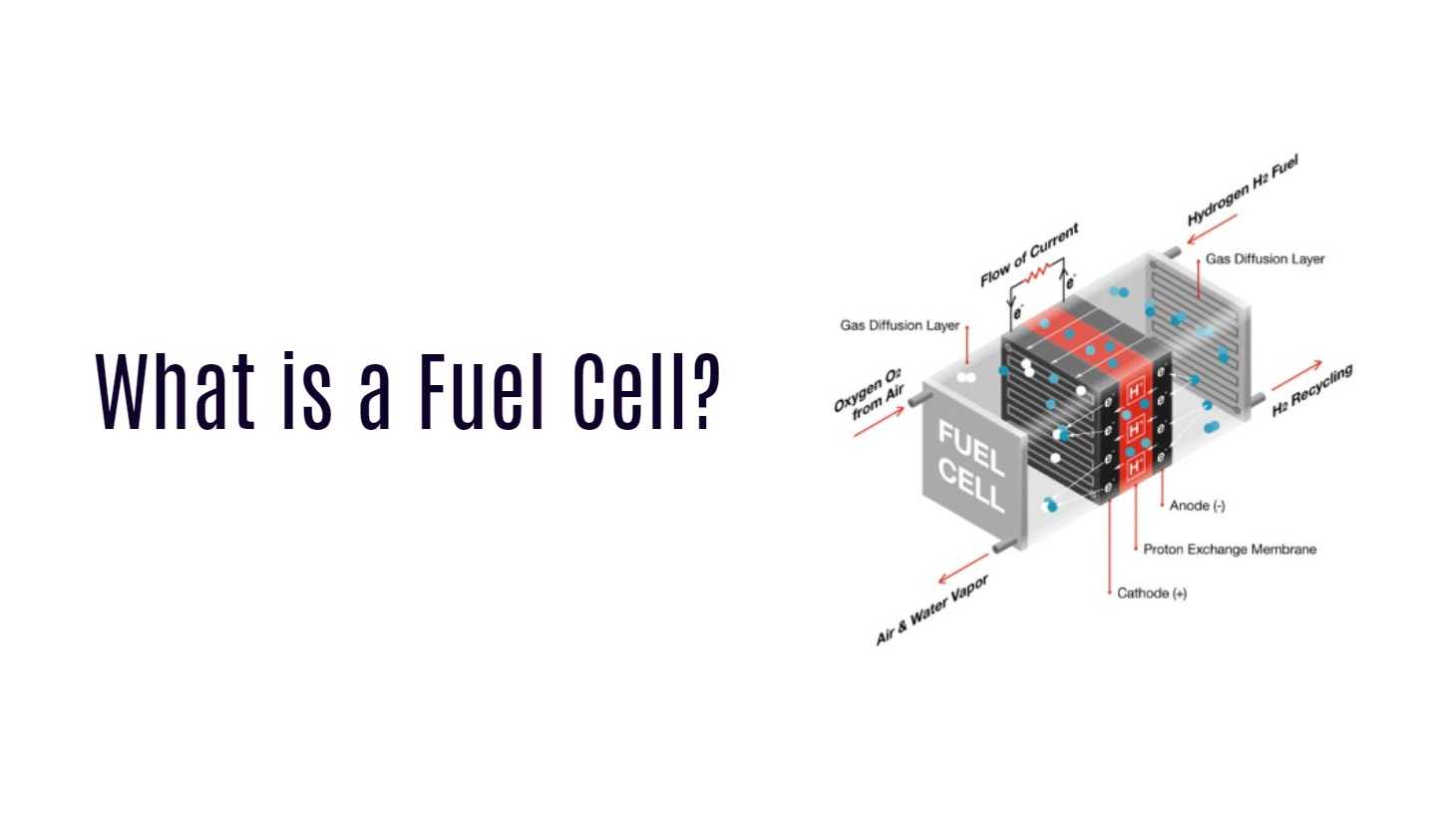
Batteries are essential components of various electronic devices. They are electrochemical cells that convert chemical energy into electrical energy. Batteries come in different types and sizes, each with their unique characteristics and applications.
The most common type of battery is the alkaline battery, which powers many household items such as toys, remote controls, flashlights, and clocks. Lithium-ion batteries are also widely used in smartphones, laptops, electric vehicles and other portable electronics due to their high energy density.
Battery technology has advanced significantly over the years leading to improved performance and longer lifespan. Modern-day batteries offer a range of benefits including portability, reliability and low maintenance requirements.
However, using batteries can have its drawbacks as well. Overcharging or overheating can cause them to leak or even explode posing safety risks for users. Disposing of old batteries properly is another issue since they contain chemicals that can harm the environment if not handled correctly.
While there may be certain disadvantages associated with using batteries; nevertheless they remain an invaluable source of power for our everyday lives thanks to their convenience and ease-of-use features.
Fuel cells and batteries are both sources of clean energy that have their own unique set of advantages and disadvantages. Fuel cells convert hydrogen fuel into electricity with the only byproduct being water, while batteries store electrical energy for later use.
One advantage of fuel cells is that they can operate continuously as long as they have a supply of hydrogen fuel. Batteries, on the other hand, need to be recharged frequently once their stored energy has been depleted.
Another advantage of fuel cells is their high efficiency compared to batteries. Fuel cells typically have an efficiency rate between 40-60%, while conventional lithium-ion batteries have an efficiency rate closer to 20%.
However, one disadvantage of fuel cells is their higher cost compared to batteries. The technology required for producing and storing hydrogen gas makes it more expensive than producing rechargeable batteries.
In terms of environmental impact, both technologies offer benefits over traditional fossil fuels but there are still concerns regarding the production processes for each option.
Whether a fuel cell or battery is better depends on specific circumstances such as intended use case and available resources.
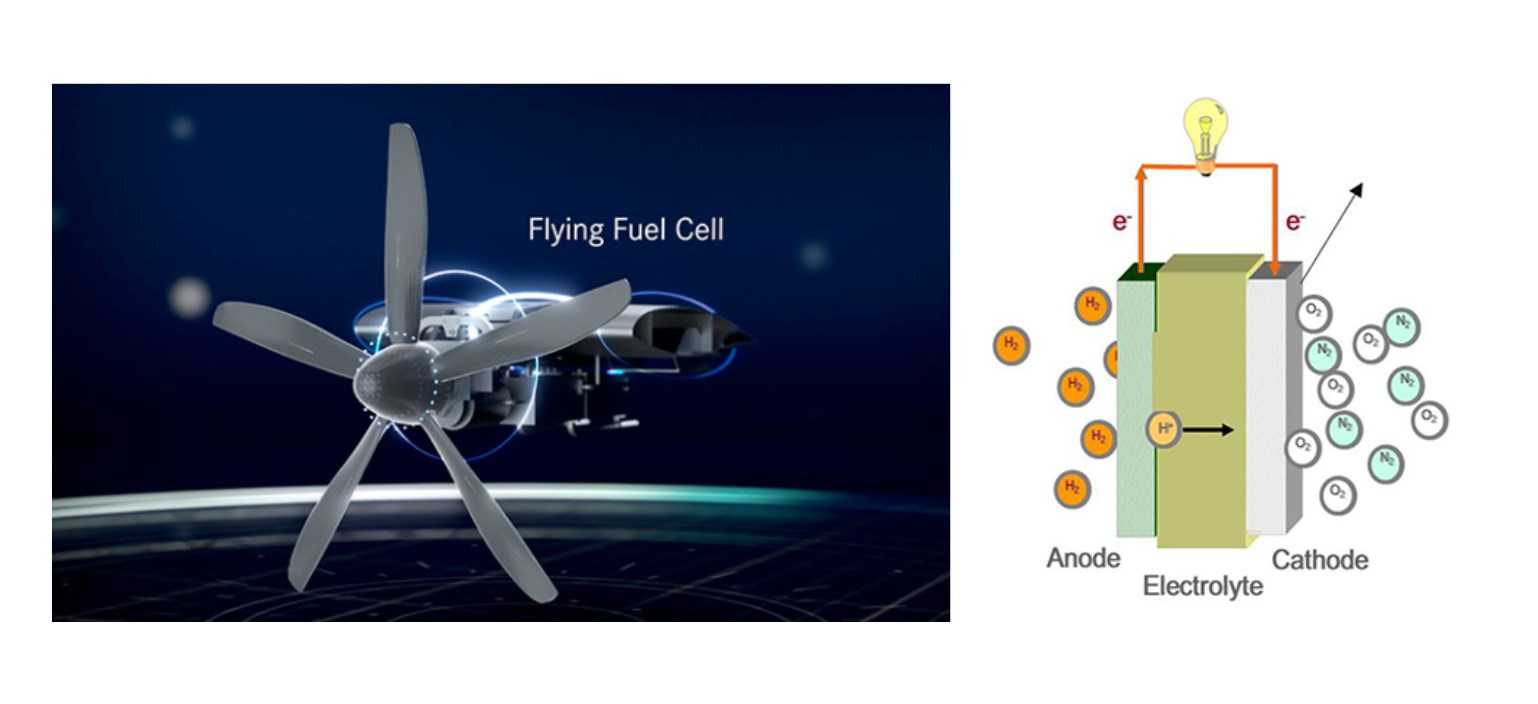
Fuel cells are a promising alternative to traditional sources of energy. One of the main advantages of fuel cells is their high efficiency in converting chemical energy into electricity. Unlike traditional combustion engines, fuel cells produce electricity through an electrochemical process which is much cleaner and more efficient.
Another advantage of fuel cells is their ability to operate quietly and with low emissions. Compared to internal combustion engines that produce noise and air pollution, fuel cell vehicles emit only water vapor as a byproduct. This makes them ideal for use in urban areas where air quality standards need to be met.
Fuel cells also have the potential for longer operating life compared to batteries since they do not degrade over time or charge cycles like batteries do. Additionally, they can be refueled quickly and easily just like gasoline-powered vehicles making them more practical for long-range travel.
One important advantage of fuel cells is their versatility – they can be used in various applications such as transportation, stationary power generation, portable power supply, and even in space exploration! With continued research and development efforts being made globally towards improving these devices’ performance characteristics while reducing costs further still make it one of the best alternatives we have today.
Fuel cells are not without their disadvantages. While they offer many advantages over traditional fossil fuel technologies, there are some drawbacks to this emerging technology.
One of the main disadvantages of fuel cells is that they can be quite expensive to produce, making them less accessible to the average consumer. Additionally, while hydrogen is abundant in nature, it can be difficult and costly to extract from other materials.
Another concern with fuel cell technology is its durability. Fuel cells require regular maintenance and upkeep which can add additional cost over time. The complexity of these systems also means that repairs or replacements may take longer than expected which could result in extended downtime for users.
Despite being a cleaner alternative to traditional fuels, fuel cell technology still relies on non-renewable resources like natural gas or coal for manufacturing hydrogen gas which raises concerns about sustainability and carbon emissions.
Despite these challenges facing fuel cell technology today, researchers continue working towards solving these issues so that one day we might see widespread adoption of this promising energy source.
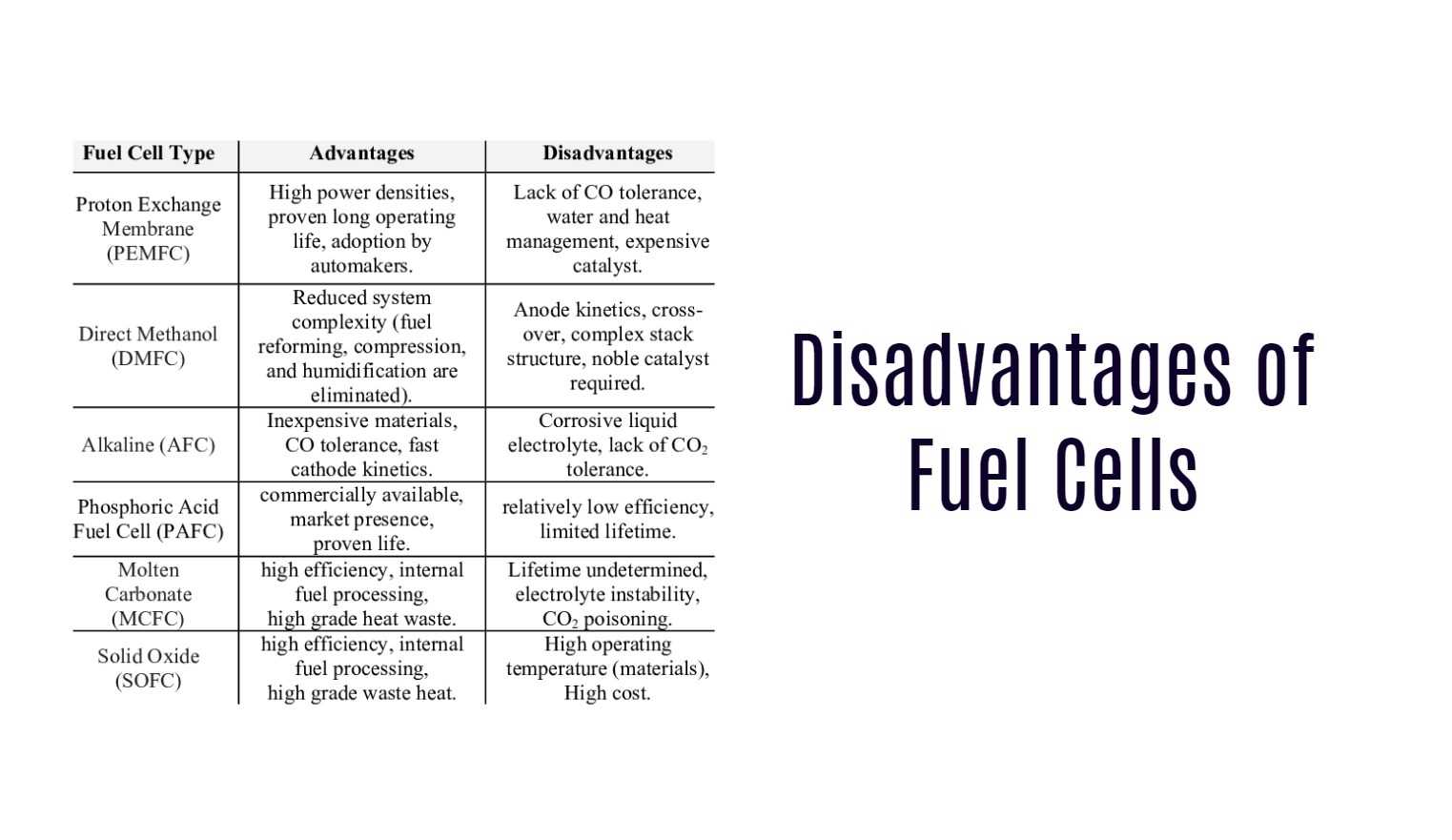
Batteries have become an essential part of our daily lives due to their numerous advantages. One significant advantage of batteries is that they are highly portable and can be easily carried around, making them ideal for use in devices such as smartphones, laptops, and tablets.
Another benefit of batteries is that they offer a reliable source of power. Unlike fuel cells which require the constant supply of hydrogen to function correctly, batteries can be charged at any time using conventional electrical outlets.
Furthermore, batteries are relatively low maintenance compared to other power sources like fuel cells. Once fully charged, they don’t need any additional attention or monitoring until depleted.
Additionally, batteries come in various sizes and shapes depending on their intended application. For instance, small button cell batteries are used in wristwatches while large lithium-ion battery packs are used in electric vehicles.
The production process for most types of batteries has become more environmentally friendly over recent years with many manufacturers adopting sustainable practices such as using recycled materials and reducing waste emissions during manufacturing.
There’s no doubt that the benefits offered by batteries make them an indispensable component in our modern world.
While batteries have their advantages, they also come with a few disadvantages. One of the main disadvantages is that batteries have a limited lifespan and need to be replaced periodically. This can be costly and often results in the disposal of old batteries, which can harm the environment.
Another disadvantage is that batteries take time to recharge and may not always hold enough charge for long periods of use. This means that if you rely on battery-powered devices, you may find yourself constantly recharging or replacing them.
Additionally, some types of batteries are prone to leakage or overheating if not used correctly or left unattended for extended periods. This can lead to damage to electronics or even pose a safety hazard.
While advances in technology have made rechargeable batteries more efficient than ever before, they still require electricity from an external source to charge. This means that even though you may be able to reuse them many times over, they still contribute indirectly to your carbon footprint.
Despite these drawbacks, there’s no denying that modern-day life would be impossible without the convenience provided by batteries!
After analyzing the advantages and disadvantages of both fuel cells and batteries, it is clear that each has its unique benefits. Fuel cells have a higher efficiency rate, produce less pollution, and offer longer ranges compared to batteries. On the other hand, batteries are more affordable, compact in size, easy to maintain and charge.
Ultimately, choosing between fuel cells or batteries depends on your specific needs as well as budget. However, with advancing technology and research in this field continues to grow every day; we can expect even better solutions for clean energy sources in the future.
Whether you opt for a battery-powered electric vehicle or go for one powered by hydrogen fuel cell technology will depend on what you consider most important – speed & range vs cost-effectiveness & maintenance requirements. Nonetheless whichever option you choose will without doubt contribute positively towards decreasing our carbon footprint which is always good news!
Deep cycle batteries provide sustained power for extended periods, suited for off-grid systems. Marine batteries offer high bursts of energy for engine starts on boats. Deep cycle batteries have thicker plates, while marine batteries prioritize high cranking amps. Choose based on your usage needs: deep cycle for prolonged power, marine for short bursts. Maintenance includes checking water levels and tight connections.
Deep cycle batteries are engineered to deliver a consistent amount of power over an extended duration, making them well-suited for applications that require sustained energy output. They find common use in golf carts, RVs, and other vehicles where a prolonged supply of electricity is necessary without access to shore power. One distinct feature of deep cycle batteries is their thicker plates compared to starting batteries, enabling them to discharge more deeply while maintaining their capacity.
Marine batteries are specifically designed for use on boats and watercraft. These batteries must endure harsh marine environments while providing reliable power to start engines and operate electrical equipment like lights or radios. Marine batteries come in two primary types: starting and deep cycle, each serving a specific purpose.
Before choosing between a deep-cycle battery or a marine one, it’s essential to assess your specific needs to determine the most suitable option for your application.
Deep cycle and marine batteries, both used to power boats, have distinct differences:
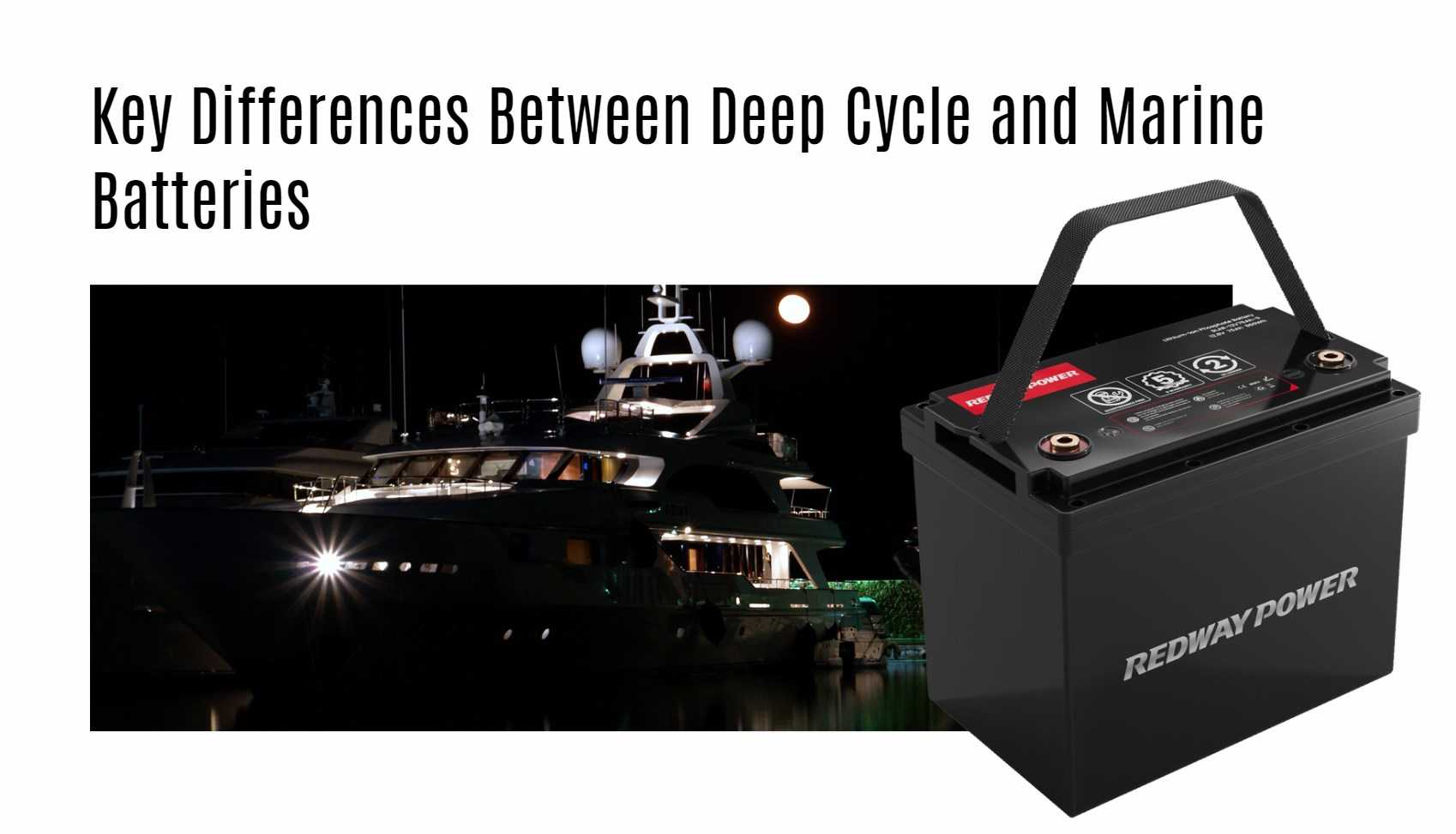
Choosing the appropriate battery type can be overwhelming if you’re unfamiliar with the differences between deep cycle and marine batteries. Here’s a simplified guide to assist you:
Ultimately, the decision boils down to assessing your equipment’s usage demands and recharging frequency. Consider factors like cost and maintenance requirements when selecting the battery type that best suits your situation.
Proper maintenance is essential for prolonging your battery’s lifespan and ensuring optimal performance. Follow these tips to maintain your deep cycle or marine battery:
If you won’t be using the battery for a while, fully charge it before storing to maintain its functionality.
In summary, both deep cycle and marine batteries are tailored for specific applications, with deep cycle batteries ideal for off-grid systems and marine batteries perfect for starting engines and providing power on boats. When selecting a battery, consider specifications, usage needs, and maintenance requirements. By following this guide, you can make an informed decision and choose a battery that will serve you well for years to come!
Batteries are present in almost all aspects of our lives. From the small button cells that power our watches to the huge batteries that power electric cars, they form an essential part of our daily lives. But have you ever wondered how batteries work, or how they store energy? The answer lies in understanding the flow of electrons in a battery.
Electrons are the tiny subatomic particles that orbit the nucleus of an atom. When these electrons flow from one atom to another, they create an electrical current. Batteries use this flow of electrons to power devices. In simple terms, a battery works by moving electrons from one electrode to another, creating a flow of current.
The flow of electrons in a battery is controlled by a chemical reaction that occurs between the electrodes and the electrolyte. The electrolyte is a solution that contains ions, which are charged particles that carry the electrical charge. When the battery is charged, the chemical reaction forces electrons from the positive electrode to the negative electrode, where they are stored. When the battery is discharged, the electrons flow back from the negative electrode to the positive electrode, creating an electrical current.
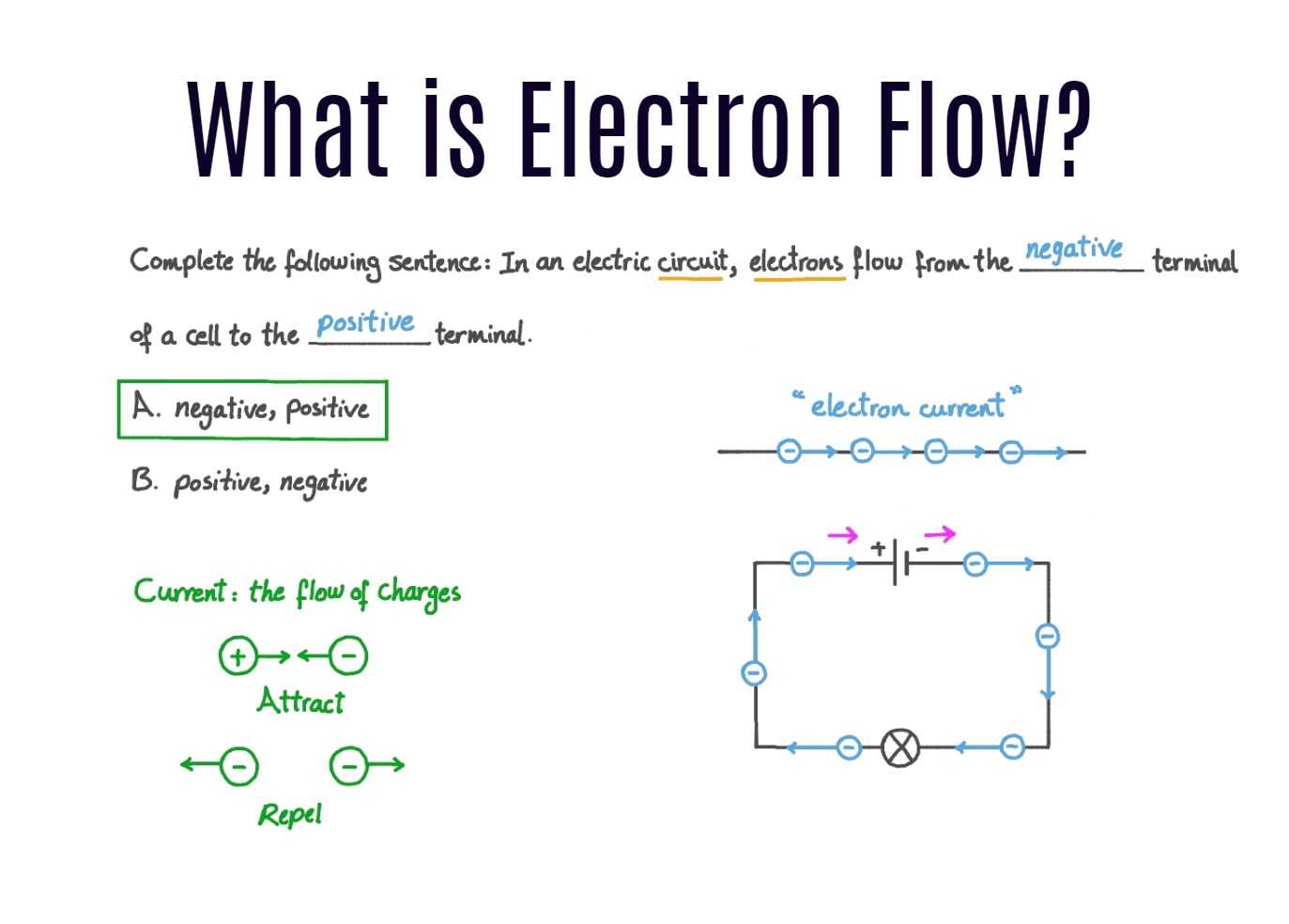
A battery is made up of two electrodes, a positive electrode and a negative electrode, and an electrolyte. The positive electrode is typically made of a metal oxide, while the negative electrode is usually made of a metal. The electrolyte is a solution that contains ions, which carry the electrical charge.
When a battery is connected to a circuit, the chemical reaction between the electrodes and the electrolyte causes the flow of electrons from the negative electrode to the positive electrode. The flow of electrons generates a current that powers the device.
Batteries store energy by converting chemical energy into electrical energy. When a battery is charged, the chemical reaction between the electrodes and the electrolyte stores energy in the form of electrons in the negative electrode. When the battery is discharged, the stored electrons flow back to the positive electrode, creating an electrical current that can power a device.
The amount of energy that a battery can store depends on its capacity. Battery capacity is measured in ampere-hours (Ah) and represents the amount of charge that a battery can deliver over a period of time. The higher the capacity, the more energy a battery can store.
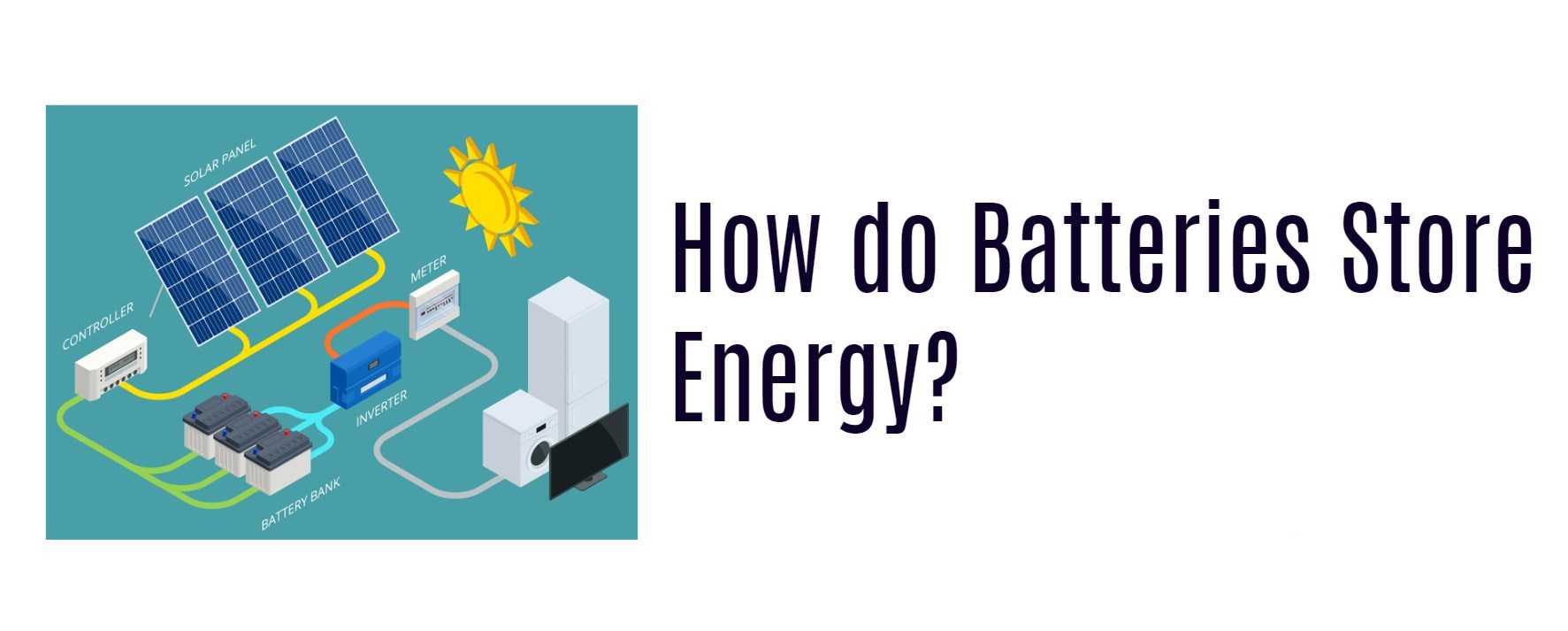
The energy stored in a battery is a result of the chemical reaction that occurs between the electrodes and the electrolyte. This reaction generates a voltage, which is the electrical potential difference between the positive and negative electrodes.
The voltage of a battery determines its energy capacity, which is the amount of energy that the battery can deliver over a period of time. The higher the voltage, the more energy a battery can store.
Batteries have become an integral part of our lives. From powering our phones and laptops to running electric vehicles and storing solar energy, they have revolutionized the way we live. But can you imagine a world without batteries?
Without batteries, we would not have portable devices, electric cars, or renewable energy storage. Life would be very different without the spark that powers our lives. So the next time you use a battery-powered device, take a moment to appreciate the science and technology that makes it possible.
Batteries may seem like a small and unassuming component of our lives, but they play an essential role in powering our world. Understanding how they work and store energy can help us appreciate the science and technology behind them. So the next time you use a battery, remember the electrons flowing inside it and the energy it holds.
 Shenzhen Redway Power, IncTel: +86 189 7608 1534Tel: +86 (755) 2801 0506 E-mail: [email protected] Website: www.redway-tech.com Youtube: @RedwayPower TikTok: @redwaybattery Get a Quick Quote |
Hot OEMForklift Lithium BatteryGolf Cart Lithium Battery RV Lithium Battery Rack-mounted Lithium Battery |
Hot Batteries24V 150Ah Forklift Lithium Battery24V 200Ah Forklift Lithium Battery 48V 400Ah Forklift Lithium Battery 48V 600Ah Forklift Lithium Battery 80V 400Ah Forklift Lithium Battery 36V 100Ah Golf Cart Lithium Battery 48V 100Ah Golf Cart Lithium Battery 51.2V 50Ah 3U Rack-mounted Lithium Battery 51.2V 100Ah 3U Rack-mounted Lithium Battery 12V 100Ah RV LiFePO4 Lithium Battery (Self-heating) |
Hot BlogGolf CartsServer Rack Battery Knowledge |
